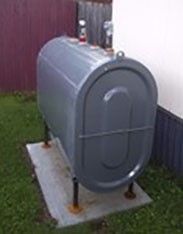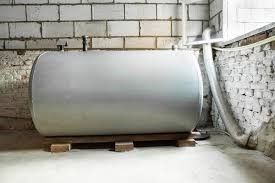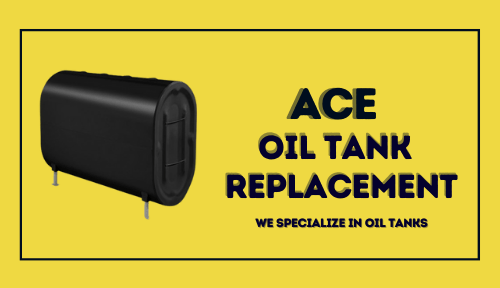Replace Oil Tank: Save Big with These Expert Tips
If you need to replace your oil tank, it's important to choose a professional service with experience in safe and efficient installations. Find local experts who specialize in replacing oil tanks to ensure a smooth and hassle-free process.
If you’re thinking about replacing your oil tank, you’re not alone. It’s a task that can seem daunting, but it’s also an opportunity to save money and improve efficiency. Let’s break down how you can make the most of this investment and avoid common pitfalls.
Why Replacing Your Oil Tank Can Save You Money
Old oil tanks can be costly in the long run. They often lead to higher energy bills and maintenance costs. By replacing your tank, you’re investing in savings that pay off over time.
Understanding the Costs of Oil Tank Replacement
The cost of replacement isn’t just the price of the tank. It includes installation of the new tank, removal of the old tank, and possibly upgrades to your heating system to accommodate a new heating oil tank. It’s important to get a clear picture of all potential costs.
When Is the Right Time to Replace Your Oil Tank?
Signs like rust, leaks, or reduced efficiency indicate it’s time for a new tank. Regular inspections can help you catch issues before they become costly problems.
Key Benefits of Upgrading Your Oil Tank
Upgrading isn’t just about getting a new tank. It’s about improving your home’s overall efficiency and safety.
Long-Term Financial Savings
A new tank means better efficiency, which translates into lower energy bills. Over time, these savings can add up significantly.
Improved Efficiency and Lower Energy Bills
Modern tanks are designed to be more efficient. This means they use less fuel to heat your home, which reduces your overall energy costs related to your heating oil tank.
Enhanced Safety and Environmental Benefits
Newer tanks are less likely to leak and are better for the environment. They also come with updated safety features to prevent hazards.
Choosing the Right Oil Tank for Your Needs
Not all heating oil tanks are created equal, especially when considering factors like corrosion, material quality, and the potential for a leaking tank. Selecting the right one for your home is crucial for maximizing benefits and savings.
Types of Oil Tanks: Above-Ground vs. Underground
Above-ground tanks are easier to inspect and maintain, but they take up space. Underground tanks are less visible but can be more complex to replace, particularly if they are a leaking tank.
Factors to Consider: Capacity, Material, and Lifespan
Consider the size of the tank based on your heating needs. Material choices for your heating oil tank affect durability and cost to replace an oil tank. Also, think about the tank’s lifespan and warranty.
How to Select the Best Oil Tank for Your Home
Think about your home’s heating requirements, available space in your basement, and budget for a heating oil tank. The right tank balances these factors to suit your needs.
Finding the Right Oil Tank Replacement Company
Choosing the right contractor can make or break your replacement experience. Look for companies with a solid reputation and expertise.
What to Look for in a Reputable Contractor
Check for experience, good reviews, and relevant certifications. A reputable contractor will provide transparent service and clear communication.
Importance of Experience and Expertise
An experienced contractor brings knowledge and skills that ensure the job is done correctly and efficiently. This can prevent future issues and additional costs.
Evaluating Customer Reviews and Testimonials
Customer reviews offer insights into a contractor’s reliability and quality of work, helping homeowners make informed decisions. Look for patterns in feedback to gauge their overall performance.
Understanding Certifications and Licenses
Verify that the contractor has the necessary licenses and certifications. This ensures they meet industry standards and regulations.
Questions to Ask Before Hiring a Contractor
Ask about their experience, pricing, and warranty terms. Get details on what’s included in the replacement process and how they handle unexpected issues.
Comparing Quotes and Services can help you understand what to expect to pay for installation.
Getting multiple quotes helps you find the best value. Compare not just the price, but also what’s included in each quote.
How to Obtain Multiple Quotes
Reach out to several contractors to get a range of quotes. This allows you to make an informed decision based on cost and services offered.
Breaking Down Quote Components
Understand what each part of the quote covers, including installation, removal of the old tank, and any additional services.
Identifying Hidden Costs and Extra Charges
Watch for extra charges that may not be obvious initially. Ensure all potential costs are included in the quote to avoid surprises.
Negotiating with Contractors: Tips for Savings
Don’t hesitate to negotiate. Contractors may be willing to offer discounts or adjust their pricing based on your needs and budget.
Preparing for Your Oil Tank Replacement
Preparation can make the installation process smoother and more efficient, especially when replacing an oil tank.
Steps to Prepare Your Home for Installation
Clear the area around the old tank and ensure easy access for the installation team. This helps avoid delays and complications.
What to Do Before the Installation Team Arrives
Confirm installation details with your contractor and make sure you understand the schedule and process. This helps ensure everything goes according to plan.
Ensuring Proper Access and Safety Measures
Make sure the installation area is safe and accessible. This includes clearing obstacles and addressing any safety concerns.
During the Replacement Process
Understanding what to expect during the replacement can help you stay informed and involved.
What to Expect on Installation Day
The team will remove the old tank and install the new one. They’ll also handle any necessary adjustments to your heating system.
How to Monitor the Work Quality
Check that the installation is done according to the agreed-upon plan. Ensure the work area is left clean and that everything is functioning properly.
Post-Replacement Tips for Maximizing Savings
After installation, there are steps you can take to ensure you continue to save and maintain your new tank effectively.
Understanding Warranty and Maintenance Options
Review the warranty details and maintenance requirements for your new tank. Regular maintenance can prevent issues and extend the tank’s lifespan.
Regular Maintenance Tips for Longevity
Follow recommended maintenance practices to keep your tank in good shape. This includes periodic inspections and timely servicing.
How to Spot Early Signs of Problems
Watch for signs like unusual noises, leaks, or fluctuating energy bills. Addressing problems early can save you from larger issues down the line.
Troubleshooting Common Issues
Know how to troubleshoot common issues with your tank. This can help you address minor problems before they become major repairs.
Taking Advantage of Energy Efficiency Programs
Many programs offer incentives for energy-efficient upgrades. Explore these options to get additional savings on your C
Government and Utility Company Incentives
Check for available rebates or tax credits from government and utility companies. These can help offset the cost of replacing your oil tank.
How to Apply for Rebates and Tax Credits
Follow the application procedures for any available incentives on your new furnace or oil tank. Ensure you meet all eligibility requirements and submit the necessary documentation.
Conclusion
Replacing your oil tank is an investment that can lead to significant savings. With the right preparation and careful choices, you can maximize those savings and enjoy a more efficient, reliable heating system.
Recap of Key Tips for Saving Big
Remember the key points: choose the right tank, find a reputable contractor, and take advantage of available incentives.
Making an Informed Decision
Take the time to research and compare options. An informed decision will pay off in the long run.
Next Steps: Scheduling Your Oil Tank Replacement
Once you’ve gathered all the information, schedule your replacement. Follow through with the necessary steps to ensure a smooth process and start enjoying the benefits of your new oil tank.
Ace Oil Tank Replacement specializes in the oil tank installation, replacement, and oil tank removal of residential and light commercial aboveground oil storage tanks. Our company offers a selection of state-of-the-art oil storage products from top manufacturers such as Granby and Roth. We are dedicated to providing our customers with unmatched oil storage solutions through a combination of exceptional customer care, skilled workmanship, and best-in-class products. For oil tank replacement cost, you can check our website and fill up the form to receive a free quote.



